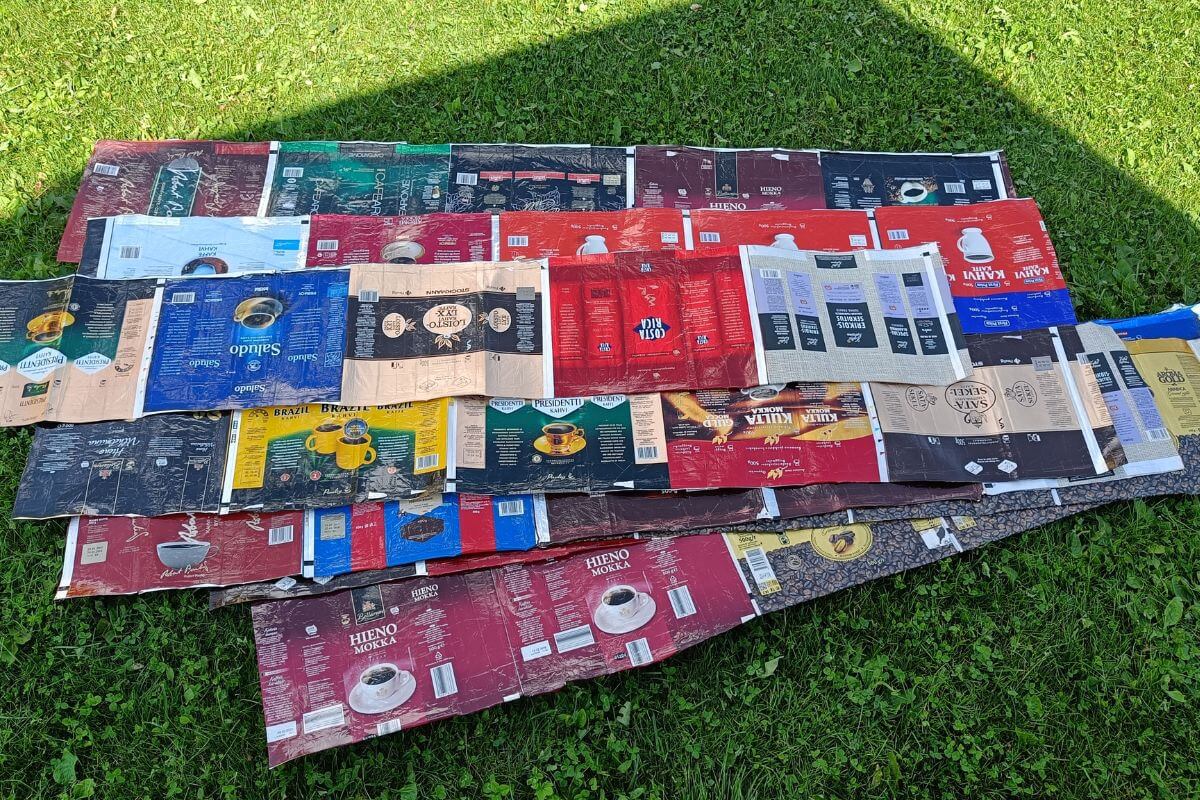My First Coffee Bag Weaving Camp Experience
This summer, I participated in my first coffee bag weaving camp. The camp was a four-day event organized by the association “Kahvipussien ihmeet ryn” (Wonders of Coffee Bags) at the Enä-Sepän camp center in Vihti, Finland. The camp brought together 35 enthusiastic coffee bag weavers from all over Finland (and even a couple from Denmark) to learn new weaving techniques and spend time together with other weavers.
The camp program included various workshops, one of which I taught myself. I also participated in a couple of workshops where I learned new ways to weave coffee bags. The side program included coffee bag exchanges, sales of accessories, a raffle, a task trail, and sauna.
continues after the ad
In my own workshop, I taught the square mill weaving technique. This was a less familiar technique for many weavers, so I gave the participants a choice of making either a small basket or a bag assembled from square mill squares. The pre-assignments for the workshop were to cut and fold the coffee bags. In the workshop, we learned how to weave the squares, join them together, and finish the edges and holes. In short, the basics.
You can watch the instructions on video:
After my own teaching, I participated in the mad weaving workshop. The pre-assignments for the workshop were to iron opened coffee bags into long strips. The strips were cut into 4 cm wide strips, which were about 150 cm long. Finally, the strips were folded in half lengthwise, resulting in a final width of 2 cm. I started the pre-assignments a couple of days before the camp, of course, and I noticed that ironing and cutting were quite time-consuming tasks. It was a good thing that we didn’t have to spend time on them at the camp.

The coffee bags are ironed with the right sides facing each other, overlapping. To protect the ironing board and iron, baking paper is placed under and over the coffee bags to prevent the plastic from melting onto the tools. The coffee bags are pressed with an iron at ()-heat for a few seconds. I managed to wrinkle the coffee bags a bit while ironing, but the end result was still quite nice. I used various patterned coffee bags for the work, which I didn’t have enough of for my own project. I made the wrong side from the inner layers of Presidentti coffee bags, so it was a solid silver color.

I placed the coffee bags next to each other from the edges of the back seams, because the edge of the coffee bag is straight in the back seam and didn’t need to be cut. Next time, however, I will place the bags the other way around, with the top and bottom edges next to each other, which will make the coffee bag sheet a bit wider. I also want to avoid the silver and white stripes of the back seams in the middle of the long strips.
continues after the ad

In mad weaving, the pattern of the braid is formed by stars or a staircase pattern, depending on the colors of the strips used. I chose a rather mixed selection of coffee bags for the work, so my basket didn’t really form any recognizable pattern. This required a bit of adaptation to the interpretation of the instructions, as I couldn’t follow the formation of the star pattern in the braiding. After the initial awkwardness, the braiding started to go well, and the lack of patterns didn’t bother me too much in the end. The end result was a rather colorful and at least unique basket.

After the mad weave workshop, I started planning new projects and different shapes that could be woven with this technique. Especially without the star or staircase pattern, you can use more creativity with the shapes instead of the regular hexagon.

As a second workshop, I participated in the weaving of a small pencil basket. The basket was woven with a diagonal weave and the special feature was that the bottom had non-standard corners. I used the ironed strips left over from the mad weave workshop, as I hadn’t made folded and taped strips for it. At least the weaving was easy with these ironed strips, which I had cut 2 cm wide for this work. The strips were about 80 cm long and there were 8 of them in total.

The weaving camp was a very enjoyable experience (Nalle also enjoyed it). It was great to meet other weavers and challenge myself by learning new things. I thought the camp had the right amount of activities, but also plenty of free time and freedom to choose what to participate in. Of course, it was also great to be able to spend several days without having to think about what to eat, as someone else had done that work for the campers. Finally, here is a short video of the atmosphere of the camp!

